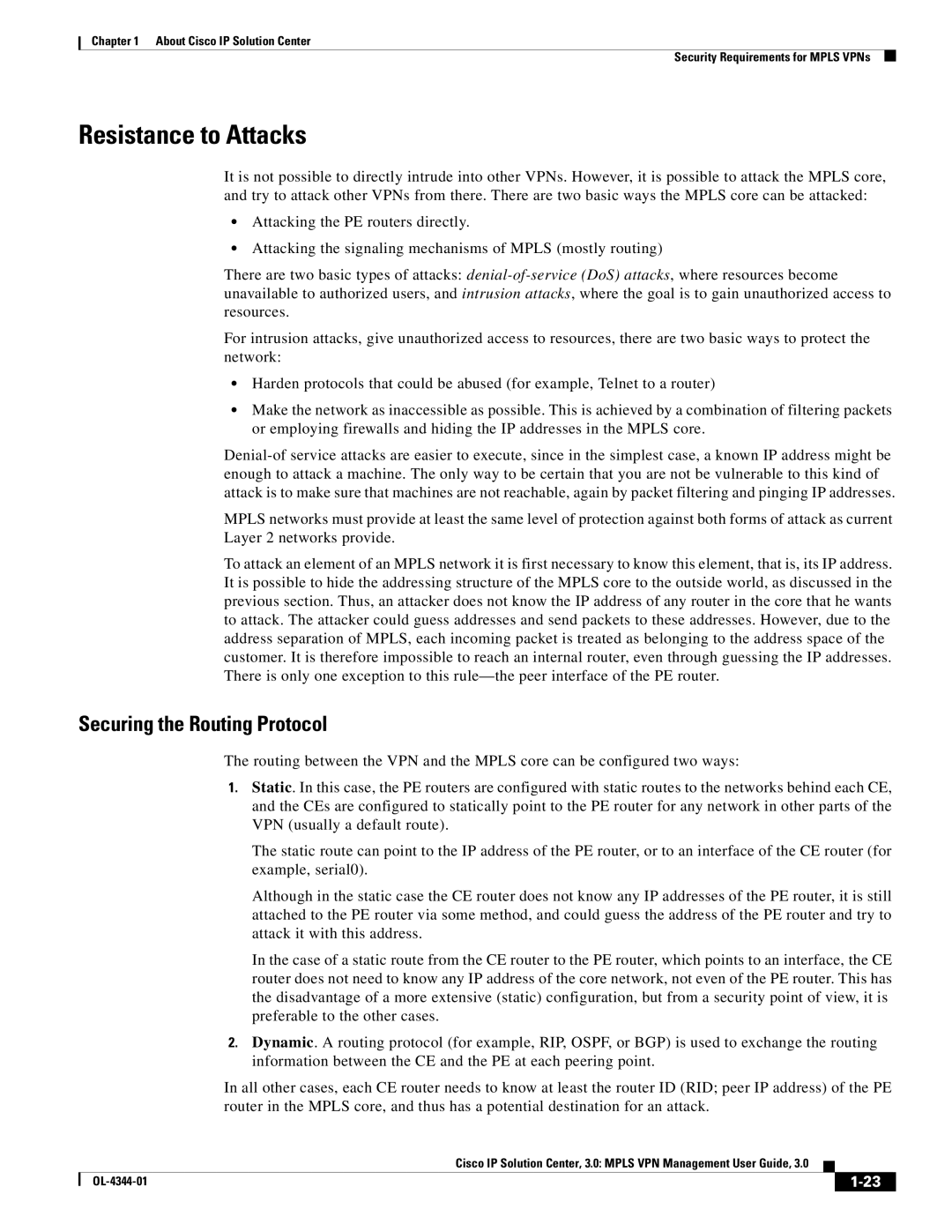
Chapter 1 About Cisco IP Solution Center
Security Requirements for MPLS VPNs
Resistance to Attacks
It is not possible to directly intrude into other VPNs. However, it is possible to attack the MPLS core, and try to attack other VPNs from there. There are two basic ways the MPLS core can be attacked:
•Attacking the PE routers directly.
•Attacking the signaling mechanisms of MPLS (mostly routing)
There are two basic types of attacks:
For intrusion attacks, give unauthorized access to resources, there are two basic ways to protect the network:
•Harden protocols that could be abused (for example, Telnet to a router)
•Make the network as inaccessible as possible. This is achieved by a combination of filtering packets or employing firewalls and hiding the IP addresses in the MPLS core.
MPLS networks must provide at least the same level of protection against both forms of attack as current Layer 2 networks provide.
To attack an element of an MPLS network it is first necessary to know this element, that is, its IP address. It is possible to hide the addressing structure of the MPLS core to the outside world, as discussed in the previous section. Thus, an attacker does not know the IP address of any router in the core that he wants to attack. The attacker could guess addresses and send packets to these addresses. However, due to the address separation of MPLS, each incoming packet is treated as belonging to the address space of the customer. It is therefore impossible to reach an internal router, even through guessing the IP addresses. There is only one exception to this
Securing the Routing Protocol
The routing between the VPN and the MPLS core can be configured two ways:
1.Static. In this case, the PE routers are configured with static routes to the networks behind each CE, and the CEs are configured to statically point to the PE router for any network in other parts of the VPN (usually a default route).
The static route can point to the IP address of the PE router, or to an interface of the CE router (for example, serial0).
Although in the static case the CE router does not know any IP addresses of the PE router, it is still attached to the PE router via some method, and could guess the address of the PE router and try to attack it with this address.
In the case of a static route from the CE router to the PE router, which points to an interface, the CE router does not need to know any IP address of the core network, not even of the PE router. This has the disadvantage of a more extensive (static) configuration, but from a security point of view, it is preferable to the other cases.
2.Dynamic. A routing protocol (for example, RIP, OSPF, or BGP) is used to exchange the routing information between the CE and the PE at each peering point.
In all other cases, each CE router needs to know at least the router ID (RID; peer IP address) of the PE router in the MPLS core, and thus has a potential destination for an attack.
Cisco IP Solution Center, 3.0: MPLS VPN Management User Guide, 3.0
|
| ||
|
|
